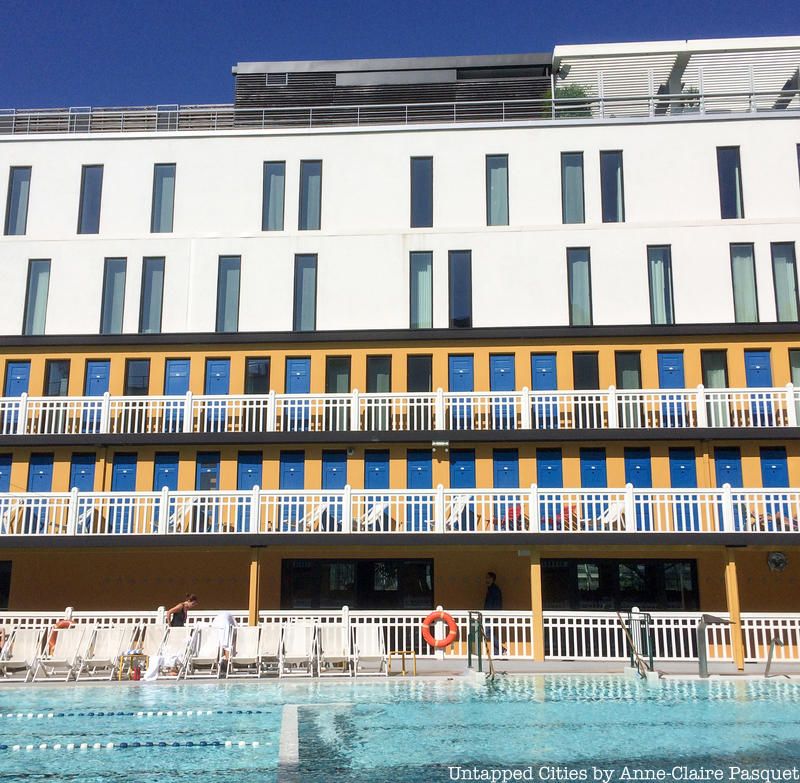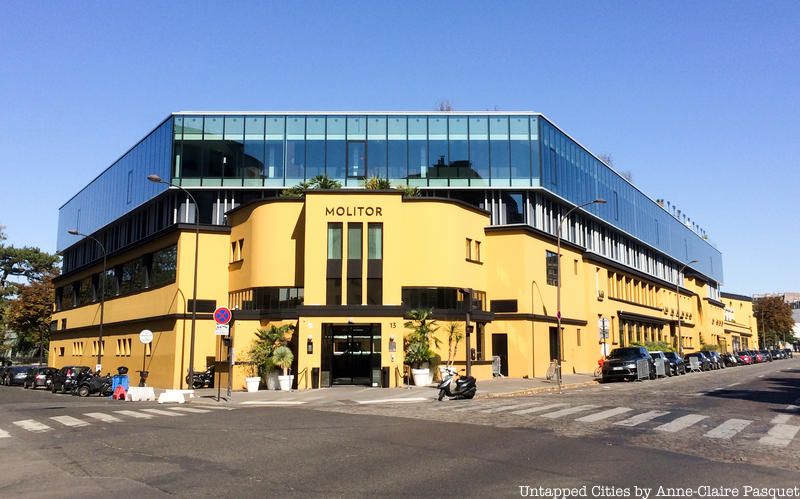✨You Can Touch the Times Square New Year's Eve Ball!
Find out how you can take home a piece of the old New Year's Eve ball!


Readers may remember the Piscine Molitor as the abandoned public swimming pool in Paris, France which gave its name to the main character in the novel and later movie Life of Pi. Largely abandoned since its closing in 1989, the Piscine Molitor has been declared a National Heritage Site by the French government, though since that declaration the pool has seen more use as a skateboard and bike park than an actual swimming pool. In fact, in recent years it has been far more famous as a graffiti and street art destination rather than a historic landmark.
In 2007, the Mayor of Paris chose the architectural group Colony Capital-Accor-Bouygues to renovate the iconic site. Originally slated to reopen in 2012, the project was delayed until 2014 and finally on Monday, May 19th, Piscine Molitor has opened its doors once again.

While perhaps most known for its appearance in Yann Martel’s book and the movie it inspired, Piscine Molitor was in its heyday between World Wars a fashionable destination for the Parisian people. Opened in 1929, the public pool was inaugurated by Olympic swimmers Aileen Riggin Soule and Johnny Weismuller. From fashion shows to theatre performances to figure skating in the winter, the Piscine Molitor and its beautiful Art Deco design quickly became an icon in Paris, a place to see and be seen. In 1946, it was the site of the first public unveiling of the modern bikini, designed by Louis Réard.
Before being established as a monument historique, the famous pool was nearly torn up to make room for housing developments in 1989. The citizen’s group SOS Molitor fought against the construction and eventually gained ownership of the property before becoming the Piscine Molitor group.

The iconic pool is now the MGallery Hotel and is only available to its guests, and much of original planner Lucien Pollet’s design has been modernized with only one part of the original facade remaining. The interior is in the words of designer Jean-Phillipe Nuel, “[tries] to conserve the dialogue between past and present” with many original features being refurbished or given a modern spin; for example in the lobby stands a classic Rolls Royce tagged by graffiti artist Jon One.

While the original espirit of the Piscine Molitor may be lost in the commercialization of the site, the renovations seem to have captured the glamour and beauty the site exuded in days past and there is no shortage of people ready to pull on their swim suits and lounge in one of the most famous and decadently charming places of Paris in its Art Deco peak.
See more vintage public pools of Paris here. The author can be reached via Twitter at @jimipage26
Subscribe to our newsletter